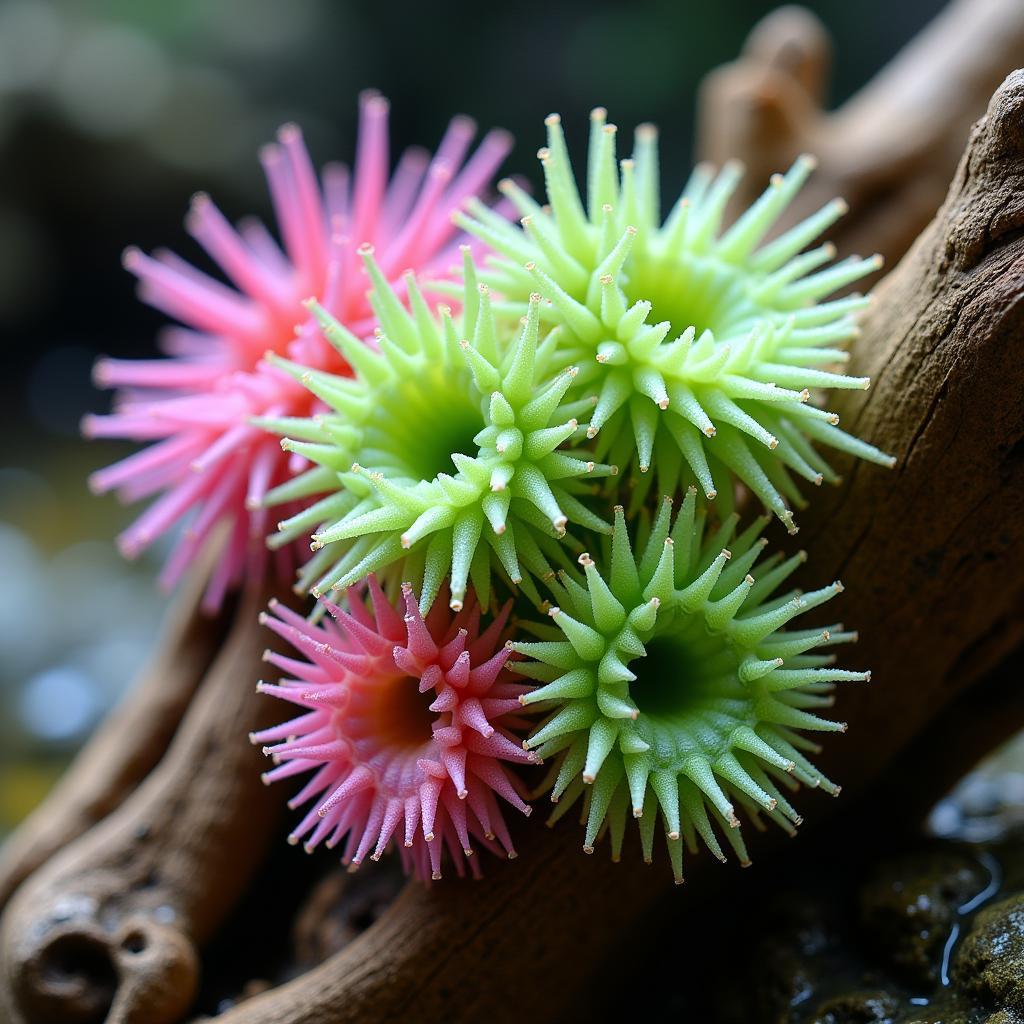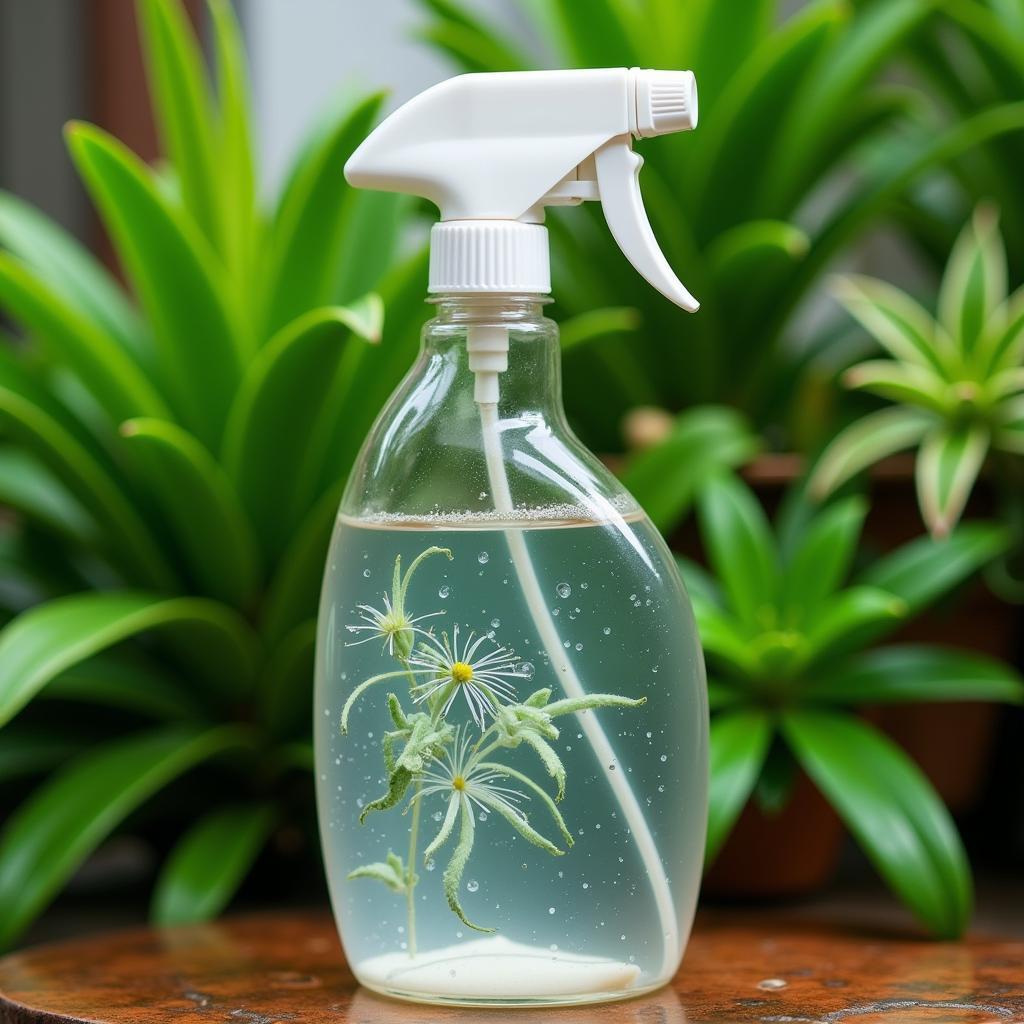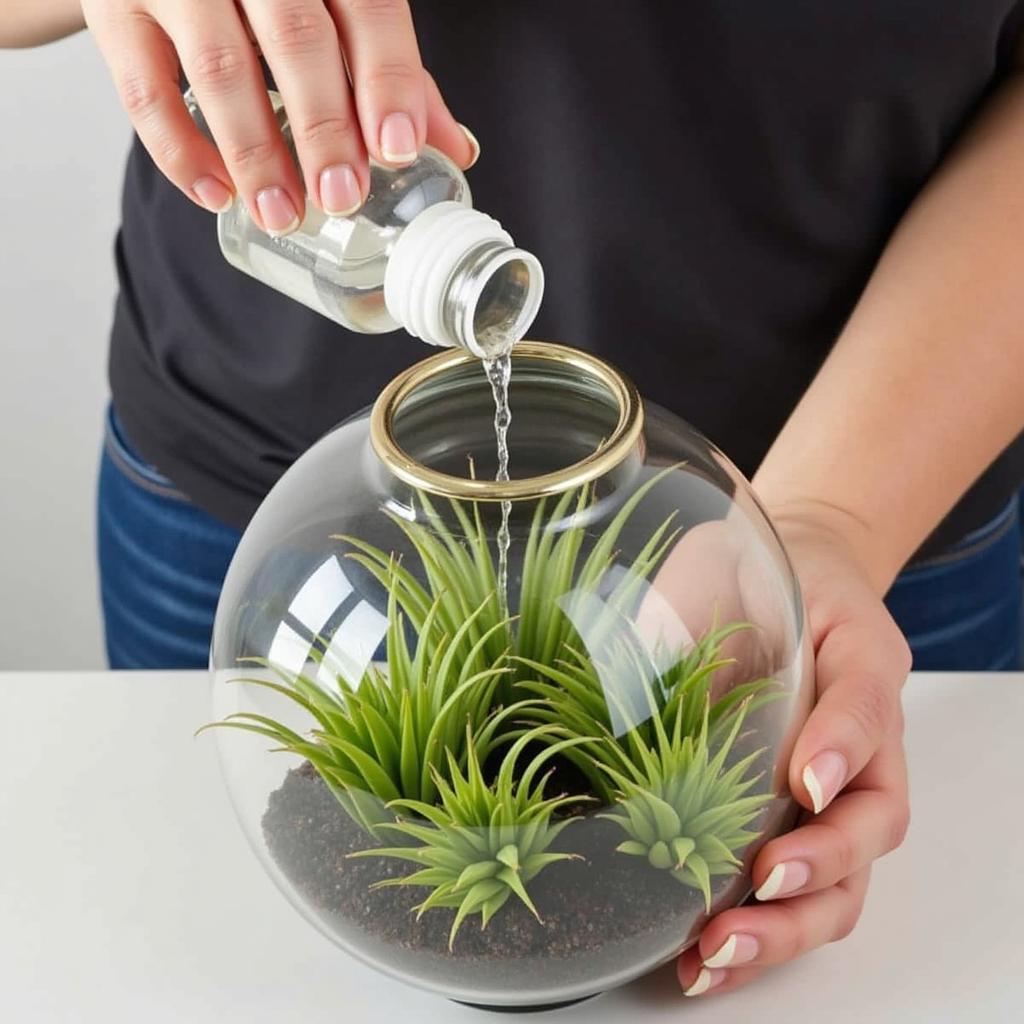Tillandsia Food, a popular topic among plant enthusiasts, often sparks curiosity and confusion. These fascinating plants, often called air plants, seem to defy conventional plant logic by thriving without soil. This unique characteristic naturally raises questions about their nutritional needs and how to best care for them. Let’s delve into the intriguing world of tillandsia food and separate the myths from the realities.
Do Tillandsias Really Need Food?
 Air Plants Absorbing Nutrients
Air Plants Absorbing Nutrients
While it’s true that tillandsias don’t rely on soil for sustenance, they are not immune to needing nourishment. Just like any other plant, they require essential nutrients to grow, thrive, and bloom. The difference lies in how they obtain these nutrients.
Unlike traditional plants that draw nutrients from the soil through their roots, tillandsias have specialized structures called trichomes on their leaves. These trichomes act like tiny mouths, absorbing moisture and nutrients directly from the air.
Debunking the Myth of “Air Alone”
 Tillandsia Fertilizer Solution
Tillandsia Fertilizer Solution
While air does contain some trace amounts of nutrients, it’s often insufficient to sustain healthy tillandsia growth long-term. This is where the concept of tillandsia “food” comes in.
Think of it this way: air provides the bare minimum for survival, like a snack, while tillandsia food acts as a nutritious meal, providing the full spectrum of essential elements for optimal health and vibrant blooms.
Choosing the Right Tillandsia Food
There’s no one-size-fits-all answer when it comes to tillandsia food. The market offers a variety of options, each with pros and cons.
- Liquid Fertilizers: These are a popular choice for their ease of use. Simply dilute the fertilizer according to the instructions and mist your tillandsias.
- Powdered Fertilizers: These offer a more concentrated dose of nutrients. However, they require pre-mixing with water and careful application to avoid over-fertilizing.
- Specialty Tillandsia Food: Some brands offer blends specifically formulated for the unique needs of tillandsias. These often contain a balanced mix of macro and micronutrients.
The Importance of a Balanced Diet
Just like humans, tillandsias thrive on a balanced diet. Look for tillandsia food that includes essential nutrients like nitrogen, phosphorus, and potassium, along with trace elements like magnesium, calcium, and iron.
Avoid fertilizers high in copper or boron, as these can be toxic to tillandsias.
Frequency is Key: When and How to Feed Your Tillandsias
 Misting Tillandsias with Fertilizer
Misting Tillandsias with Fertilizer
Over-fertilizing can be just as detrimental as under-fertilizing. The general rule of thumb is to fertilize your tillandsias once every two to four weeks during their active growing season (spring and summer). Reduce the frequency to once a month during the dormant season (fall and winter).
Always dilute the fertilizer solution as directed on the product label. Over-concentrated solutions can burn the delicate trichomes and harm your plants.
Beyond Food: Other Factors for Healthy Tillandsias
While providing adequate nutrition is crucial, other factors also play a significant role in the well-being of your tillandsias. These include:
- Bright, Indirect Light: Tillandsias thrive in bright, indirect light. Avoid placing them in direct sunlight, as it can scorch their leaves.
- Adequate Air Circulation: Good air circulation is essential for preventing fungal diseases.
- Proper Watering Techniques: Soak your tillandsias in water for 15-20 minutes once or twice a week, depending on your climate. Allow them to dry completely before returning them to their display area.
Conclusion
Understanding the nutritional needs of tillandsias is key to their long-term health and vibrancy. By providing them with the right “food” and optimal growing conditions, you can enjoy these fascinating plants for years to come.
FAQs
1. Can I use regular plant fertilizer on my tillandsias?
While you can use a diluted solution of regular plant fertilizer in a pinch, it’s best to opt for a product specifically formulated for tillandsias. These blends provide a balanced mix of nutrients that cater to their unique needs.
2. How do I know if I’m over-fertilizing my tillandsia?
Signs of over-fertilization include leaf burn, browning tips, and stunted growth. If you notice any of these symptoms, reduce the frequency of fertilization.
3. Do I need to fertilize my tillandsia if it’s blooming?
Yes, continue fertilizing your tillandsia during its blooming period to provide the extra energy it needs to produce flowers.
4. Can I use tap water to fertilize my tillandsias?
Tap water often contains chlorine and minerals that can be harmful to tillandsias. It’s best to use filtered or rainwater.
5. How long does tillandsia food last?
Liquid fertilizers typically have a shelf life of one to two years. Check the product label for specific expiration dates.
For any further assistance or inquiries, please don’t hesitate to contact us. Our dedicated customer support team is available 24/7 to address your needs. Reach us at Phone Number: 02437655121, Email: minacones@gmail.com or visit us at 3PGH+8R9, ĐT70A, thôn Trung, Bắc Từ Liêm, Hà Nội, Việt Nam. You can also find more insightful articles on our website.